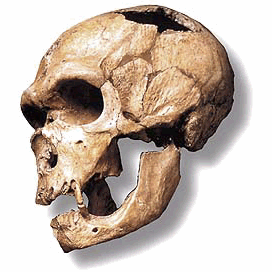
Evolution shows us how the natural world changes. It is the small changes through generations of life. The genetic "make up" of life, the environment, and many other factors all play a part in how species become more distinct from each other. It leads people to assume that there’s big difference between the two. In this post, I’m going to explain the general concepts of both.
Discovery of Evolution
I have to discuss CHARLES DARWIN, who was the author of THE ORIGIN OF SPECIES. He published his work on natural selection and changed the sciences forever. His work on finches at the Galapagos islands showed us microevolution and macroevolution in a time where we were struggling through the ideas of where life came from.

Alongside Charles Darwin is ALFRED RUSSEL WALLACE, who discovered natural selection independently from Charles at the same time and coauthored papers with him.

Microevolution
Microevolution, which is generally accepted no matter your religious beliefs because it happens on a smaller scale of time and is more easily understood. Microevolution is the change within a population of a species. It examines changes in allele frequencies through the PROCESSES OF EVOLUTION within a population. A group of one species is slowly changing their genetic "make up" collectively as they continue to reproduce through the generations.
We can use Darwin's finches as an example. Let’s say the finches on an island and all have different sized beaks because of their genes and alleles. If the only food on the island is either a huge nut that’s tough or a tiny nut that’s hard to grab without precision grip, the beaks sizes of the finches will change over time. The beak size that allows them to access more food will have more children.
This is the process of NATURAL SELECTION and shows us a disruptive curve (labeled "diversifying selection" in graph), where the extreme differences in beak sizes are more developed in the population. What’s important to realize about macroevolution and microevolution is that there’s no barrier between the lengths of time you’re talking about before you switch the term you use. You're just defining whether you're looking at long-term changes or short-term changes.
Macroevolution
When scientists talk about macroevolution, they’re specifically referring to the changes that have happened above the species level of life. This means that the species are becoming more distinct from each other until they are considered difference species entirely. These changes are caught in a moment of time like in our fossils, where we see a skeleton that is different from the older version of that species. The changes we infer from the evidence encompasses the theory of evolution. Macroevolution is the accumulation of events from microevolution seen in species over long periods of time known as deep time.
Let's consider the massive amounts of math and calculations we had to use in order to get to the moon. We never went to the moon before so how did we get there? We had to infer the technology we’d need, the lack of gravity on the moon, and the distance. Scientists also had to infer how to get back from the moon without the astronauts burning up while re-entering our atmosphere or how to make sure we don’t fly by the earth and never make it back. The evidence and knowledge gained by scientists up to that point enabled them to figure out how to achieve the amazing feat of space travel.

Inferring the concept of macroevolution is like inferring whether someone is home. If you walk into someone’s house and the lights are on, you can infer that someone currently lives there. The more evidence you have without actually seeing the person in the house, the more you can infer that the person does live there without you having to see them directly. Macroevolution is inferred since the changes that occur happen over such a long time we may not see it as it's happening unless we have a trained eye. Most changes in macroevolution are seen in skeletal features, genetics, and fossils.

How It Comes Together
All of the circumstances leading up to the changes for both macroevolution and microevolution are the same. The difference between them is the point in time that you're looking at and which changes are examined to understand a species. There’s no known barrier to large changes because the small changes of microevolution accumulate into the big changes of macroevolution. You can’t separate the two forms of evolution from each other because they're the same thing just at different points of time for a species.
Sources:
Theories of Human Evolution: A century Debate, 1844-1944 by Peter J. Bowler
The Counter-Creationism Handbook by Mark Isaak
Undeniable: Evolution and the Science of Creation by Bill Nye
Evolution: What the Fossils Say and Why It Matters by Donald R. Prothero







